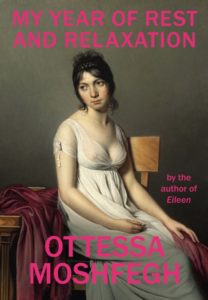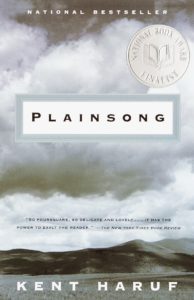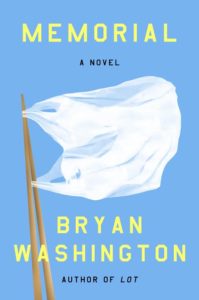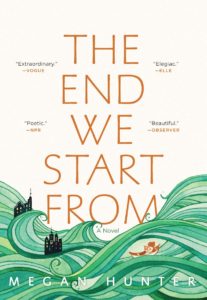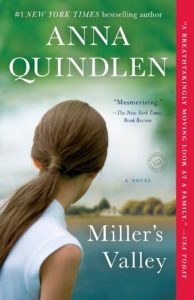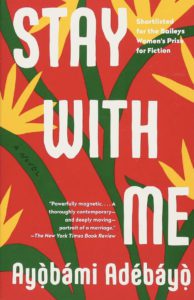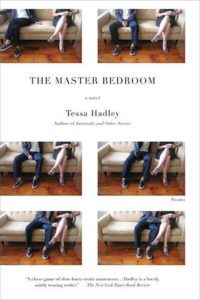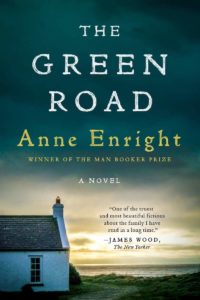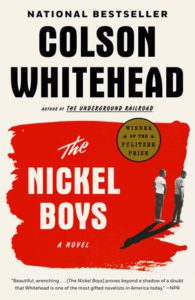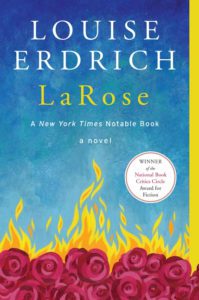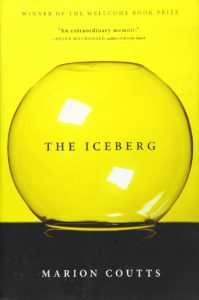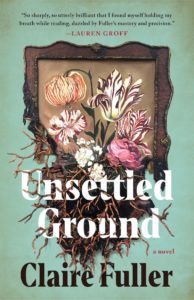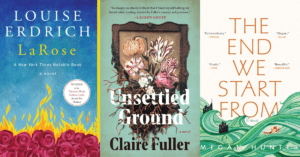
It’s easy to say that home is wherever the people you love are, but while there is, of course, some truth in that, it’s not the whole story. For many, home is where there is security, safety, a meeting of physical needs (a roof and warmth), and love. And then there are the financial aspects of home. If you’ve invested in one, it’s not so easy to leave everything behind and start again.
For Jeanie Seeder, the protagonist in my fourth novel, Unsettled Ground, home is also about history: it is the place where she grew up, and the only place she has ever lived. Home is about her possessions, and those her parents amassed and her grandparents before them. It’s about the bed she and her brother were born in, and the kitchen where her mother dies. Having to leave her home means that, for Jeanie, all of this can now only exist in memories.
Below are eleven novels and one memoir that look at home in different ways.
***
My Year of Rest and Relaxation by Ottessa Moshfegh
As close as it gets to a novel that predicts the way most of us have been living during lockdown. A self-absorbed, unnamed narrator decides that home is her pre-9/11 Upper East Side apartment where she’ll do anything in order to sleep for a year. After losing her job, she takes to pills, Whoopi Goldberg films, and tequila, and she does a pretty good job of self-isolating. At the same time, she frustrates her persistent best friend, her questionable psychiatrist, me as a reader and probably—especially—herself. That’s the sum total of what goes on in the book. Her home is the small and only world she can inhabit. It’s claustrophobic, unsettling, and a little bit grubby.
Plainsong by Kent Haruf
What if your home was your community? What if you lived in a place where everyone knows everyone else’s business? Would that be a good thing? It can be. Plainsong takes place in Holt, Colorado. Victoria is seventeen and alone when she becomes pregnant. She is taken in by big-hearted Maggie but ends up with two brothers, Raymond and Harold, quiet and dignified men with hearts of gold who have spent their entire lives working the same ranch where they grew up. The love that develops in this makeshift family is poignant and real and stands the test of time. There are some unsavory events that take place in Holt and this adds to the reality and strength of storytelling. As Vicky realizes that she’s finally found a home, the sense of belonging she feels is tangible. Beautiful, honest writing and a joy to read. Kent Haruf was a master of his craft.
Memorial by Bryan Washington
African American Benson and Japanese American Mike have been in a relationship for four years, but it seems like its end is approaching. As the novel opens, Mike decides to travel to Japan to find his ill father, at the same time as Mike’s Japanese mother comes to the US to visit. Benson is left to look after her in the one-bedroom apartment the men share together. If your boyfriend leaves the country and a stranger arrives in your apartment, is it still home? If you stay with your father—a stranger to you—in his apartment in Japan, is that home? Washington makes us question what makes a home, and how.
The End We Start From by Megan Hunter
This novella, only one hundred and twenty-seven pages long, doesn’t provide much description or explanation of homes or locations; instead Hunter leaves spaces for the reader to fill in. As London is submerged under flood water, a woman, her husband, and their newly born baby are forced to flee their home. This small family at first stays with the woman’s in-laws, but then is forced on the road again, becoming refugees shuttling between camps until the husband is gone and, “home is another word which has lost itself.” In fine staccato prose, the mother searches for her husband and for somewhere she can resettle and rebuild.
Miller’s Valley by Anna Quindlen
A well-crafted coming-of-age novel telling the story of protagonist Mimi and her family. For years, the family’s farm has been under threat from ever increasing floods caused by the ill-planned Roosevelt Dam. Mimi listens in on her parents and absorbs everything around her—secrets, passions, and lies. Her brothers come and go: one marries and leaves the farm, and is subsequently regarded as an outsider. The other returns from the Vietnam War a changed and broken man. At the heart of this novel are questions of how we are shaped by a place, and whether home might simply be the people who we share our lives with.
Mrs Palfrey at the Claremont by Elizabeth Taylor
Mrs Palfrey moves to the Claremont hotel in London in the 1960s after her husband dies. The hotel is respectable, although rather down at heel, as are many of its aging residents. Even while treating the place like the hotel it is, the residents know they are likely to remain there until they have to move into a nursing home or hospital. The novel, first published in 1971, is really about denial—it’s about pretending that the fact that no one is coming to visit and that your home has been reduced to one room which looks out on a brick wall is absolutely fine. This might sound bleak, but Taylor’s pen is sharp and her humor is wry.
Stay with Me by Ayòbámi Adébáyò
In this powerful debut set in Nigeria, Yejide and Akin fall in love and marry. Although their society practices polyamory, they agree to have only each other. They wait for Yejide to conceive but when, after several years, this doesn’t happen, Akin’s family introduces a new wife into the couple’s home. Yejide is told not that she has to give up her place but that she has to “shift” to allow the other woman in. Yejide’s home and her marriage has fundamentally changed, and she must decide how to move forward.
The Master Bedroom by Tessa Hadley
Kate Flynn moves back home at the age of forty-three, to care for her elderly mother, Billie, who is still living in the house where Kate grew up—a gloomy, red-brick villa next to a lake in Cardiff. In theory, Kate is starting a new life having given up her job, but the house is full of everything the family has ever owned: cupboards and rooms are stuffed with furniture, boxes, and papers. The novel is very much character-led and Kate’s new/old home reflects who she is and how resistant she is to change, until change is thrust upon her.
The Green Road by Anne Enright
Matriarch, Rosaleen announces to her four grown children that she is selling the family home. Her children are scattered around the world, and as they learn about their mother’s decision, we learn about each of them in turn. They all come home to County Clare in Ireland, where the symbolic green road leads them. There, needy and manipulative Rosaleen holds court, doing nothing and expecting everything. The beauty here is in Enright’s gorgeous language, and in her descriptions of character and place.
The Nickel Boys by Colson Whitehead
This is the story of Elwood, a clever Black boy who is in the wrong place at the wrong time and is sent to the Nickel Academy, an inhumane reformatory school. It might be called an “academy,” but very little learning goes on inside. Instead, the boys are beaten, abused, and taken advantage of, with especially bad treatment given to the Black students. They don’t regard this place as “home,” of course, but while they sleep, eat, and work there, friendships are made—as well as plans to escape. Whitehead’s writing is understated, making the scenes of what happens here even harder to read and more powerful.
LaRose by Louise Erdrich
In North Dakota, Landreaux, an Ojibwe man accidentally shoots and kills his neighbor’s young son. In accordance with his tribe’s custom, he gives his own five-year-old son, LaRose, to his neighbor. LaRose is devastated at being moved from everything he has known, into the home of his now-dead best friend, and cannot stop crying. Erdrich cleverly weaves in Ojibwe history and other characters’ points of view, but it is the central idea of being uprooted to a new home after a terrible death that stays with me.
The Iceberg: A Memoir by Marion Coutts
Marion Coutts’s husband, Tom Lubbock, was diagnosed with a brain tumor in 2008. The Iceberg is the eighteen months from that point up to his death. There is so much here that touches on home: what it’s like when the very necessary caregivers treat the Lubbock house as a place of work and not as Marion and Tom’s home, and where is home when the house is no longer suitable for Tom’s needs? So, Marion recreates the home they have both loved in a hospice. Their young son plays there, friends come to visit, food is shared. Coutts writes in lucid and stunning bursts of words, and shows readers that in this memoir, a home is absolutely where your loved ones are.
And to close out this wonderful list, we just had to include Claire’s new novel, Unsettled Ground, forthcoming on May 18 from Tin House Books! – Ed.
Unsettled Ground by Claire Fuller
At fifty-one years old, twins Jeanie and Julius still live with their mother, Dot, in rural isolation in the English countryside. The cottage they have shared their entire lives is their only protection against the modernizing world around them. Inside its walls, they make music, and in its garden, they grow everything they need to survive. To an outsider, it looks like poverty; to them, it is home. But when Dot dies unexpectedly, the world they’ve so carefully created begins to fall apart. The cottage they love, and the security it offered, is taken back by their landlord, exposing the twins to harsh truths and even harsher realities. Seeing a new future, Julius becomes torn between the loyalty he feels towards his sister and his desire for independence, while Jeanie struggles to find work and a home for them both. And just when it seems there might be a way forward, a series of startling secrets from their mother’s past come to the surface, forcing the twins to question who they are, and everything they know of their family’s history.

